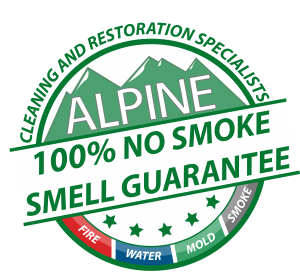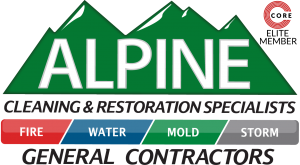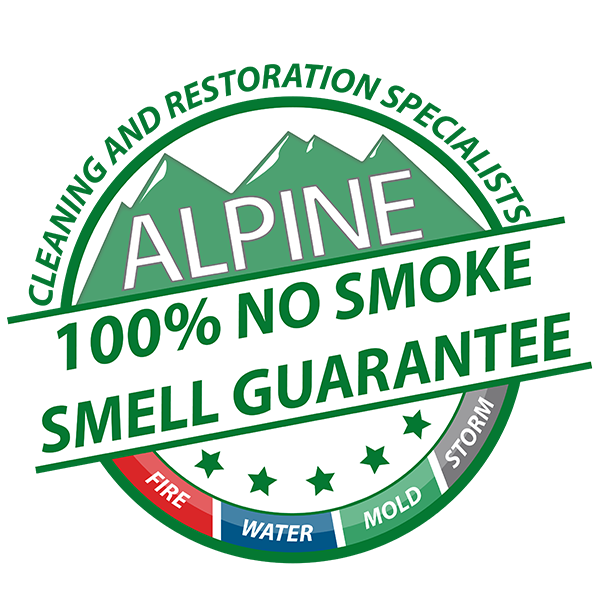5 Wildfire Season Safety Tips

It’s Wildfire Season Again
You may have heard about the wildfire blazing on the Utah-Idaho border. This is only one of as many as twenty wildfires that firefighters in Utah have responded to this year. Already, they have burned up as much as 1500 acres of land. Smoke from these fires has created a smoggy haze that’s fallen over cities many miles from the fire’s actual location.
Wildfires are destructive and terrifying, but they only happen in forests right? Wrong! Last year, the most devastating fires in California all happened miles away from any forests despite the focus on forest firefighting in the media. Urban areas are a prime target for wildfires, most often because people think they’re safe and don’t take precautions. In the last article, we looked at some general fire safety tips. Today, we’re going to look at five ways you can specifically protect yourself and your home from wildfires.
1. Secure the Area Around Your Home
A common mistake people make during wildfire safety is having combustible materials too close to their homes. Wildfires generate intense heat and can ignite material from as much as 100 feet away! Therefore, it’s wise to move firewood, dead plants and dried grass, unpruned and low-hanging branches, and even wood fencing, as well as anything else that could catch fire to a minimum safe distance of at least 30 feet. If you do have a wooden fence, it’s a good idea to separate it from your home with a masonry or metal barrier to prevent a fire from spreading along the fence to your house.
But it’s also important that you don’t go overboard. Some people think creating a buffer zone means clearing out anything that might burn within the 100 foot danger area. This is actually a mistake. While you should definitely thin out the vegetation close to your home, be sure to leave some there. It will help to catch the embers blown by the wind, which is the number one way that wildfires ignite houses. Live vegetation, when kept watered, is slower to ignite than you’d think. If enough is there to catch the embers, they are more likely to have time to cool before they can actually ignite anything.
2. Keep the Fire From Getting In
Speaking of embers, a single one is enough to light up any number of things in your home. You need to do everything you can to keep them out. The number one place for them to get in is through openings in the eaves and vents on your roof. Make sure that any openings are screened. It may seem like a little detail, but a good metal screen is often a surefire way to make sure the fire doesn’t get into your house.
Windows are another overlooked precaution. Intense heat can go right through the glass and light up anything too close. Replace your drapes and any furniture near the windows with heat-resistant fabrics.
Combine this with some extra planning for the outside of your house and the chances of your home surviving a wildfire increase dramatically. And on the subject of the exterior . . .
3. Protect the Outside of Your Home
The best time to start planning on fire protection is when you first start building a house. From the get-go, you should plan for wildfires, especially if you live in an area prone to them. First of all, consider the location. Putting your house near a thick stand of tress is clearly not a smart idea, but it’s also a bad idea to put your house on hilltop, or overhanging any place that a wildfire might sweep through. These spots are just asking for your house to go up in a blaze.
When designing your home, plan to build it from fire resistant materials. Avoid complicated shapes in the layout, as these create places for embers to fall and get stuck in. If you build your homes with these in mind, it will greatly reduce the fire danger.
If you aren’t building a new house, try to buy one that meets these conditions. And even if you’ve already bought your home, there are still ways to improve on it. Consider upgrading the roof, for example. Older homes often have wooden shingles. These are a big mistake. Asphalt shingles are better, but steel and tile are the safest. If you’ve got a wood-shingled house, have the roof replaced with better materials as soon as you can. Not only will it decrease the fire hazard, but it can also reduce your insurance rates.
4. Work with Your Neighbors
All of these safety tips are useful, but they might not be any good if your neighbors don’t also take precautions. In places where homes are closely packed, your house is only as fire-proof as the one next door.
Therefore, it is a good idea to form community fire plans. Get together with the people in your area and make sure everyone understands the basics of fire safety. Help them fire-proof their homes as much as you can, because if their home goes up, yours might, too. Community meetings to discuss the matter will help get everyone on board. Don’t be afraid to remind your neighbors of fire hazards in their yards, either; chances are, they might not have realized it and will appreciate the reminder.
5. Always Have A Wildfire Safety Plan
Even with all the precautions taken, there’s no way you can absolutely guarantee your home will be protected. Do everything you can to protect your home, but be sure that you have a plan for what to do if a wildfire gets out of control in your area. Develop a plan for what you will do and where you will go if a wildfire gets close to your home. Make sure that your family knows it and have practice evacuations so everybody in your home knows what to do. It will help them stay calm if the worst should happen.
Don’t try to stay in your home if a fire gets close. There’s nothing you can do to prevent your house from burning down by staying in it. A house can be rebuilt, but lives lost cannot be restored. Do not take the risk. Taking the above precautions will dramatically increase the chances of your house surviving a wildfire. If you’ve done them, then all that remains to do is get yourself and your family to safety and hope for the best.
We’re Ready To Help You
 We all hope that the worst doesn’t happen, but that’s not always in our control. Even with every precaution taken, your house might still be lost or damaged in a fire. If that happens, the people at Alpine Cleaning and Restoration are here for you. We’re the best restoration company in Utah. As soon as the firefighters give the clear to return, you can get in touch. We will restore your house to as good as new, if not better. You won’t even smell the smoke! We’ll work with your insurance agency to give you the best restoration possible. You can rest easy knowing we’re on the job.
We all hope that the worst doesn’t happen, but that’s not always in our control. Even with every precaution taken, your house might still be lost or damaged in a fire. If that happens, the people at Alpine Cleaning and Restoration are here for you. We’re the best restoration company in Utah. As soon as the firefighters give the clear to return, you can get in touch. We will restore your house to as good as new, if not better. You won’t even smell the smoke! We’ll work with your insurance agency to give you the best restoration possible. You can rest easy knowing we’re on the job.




